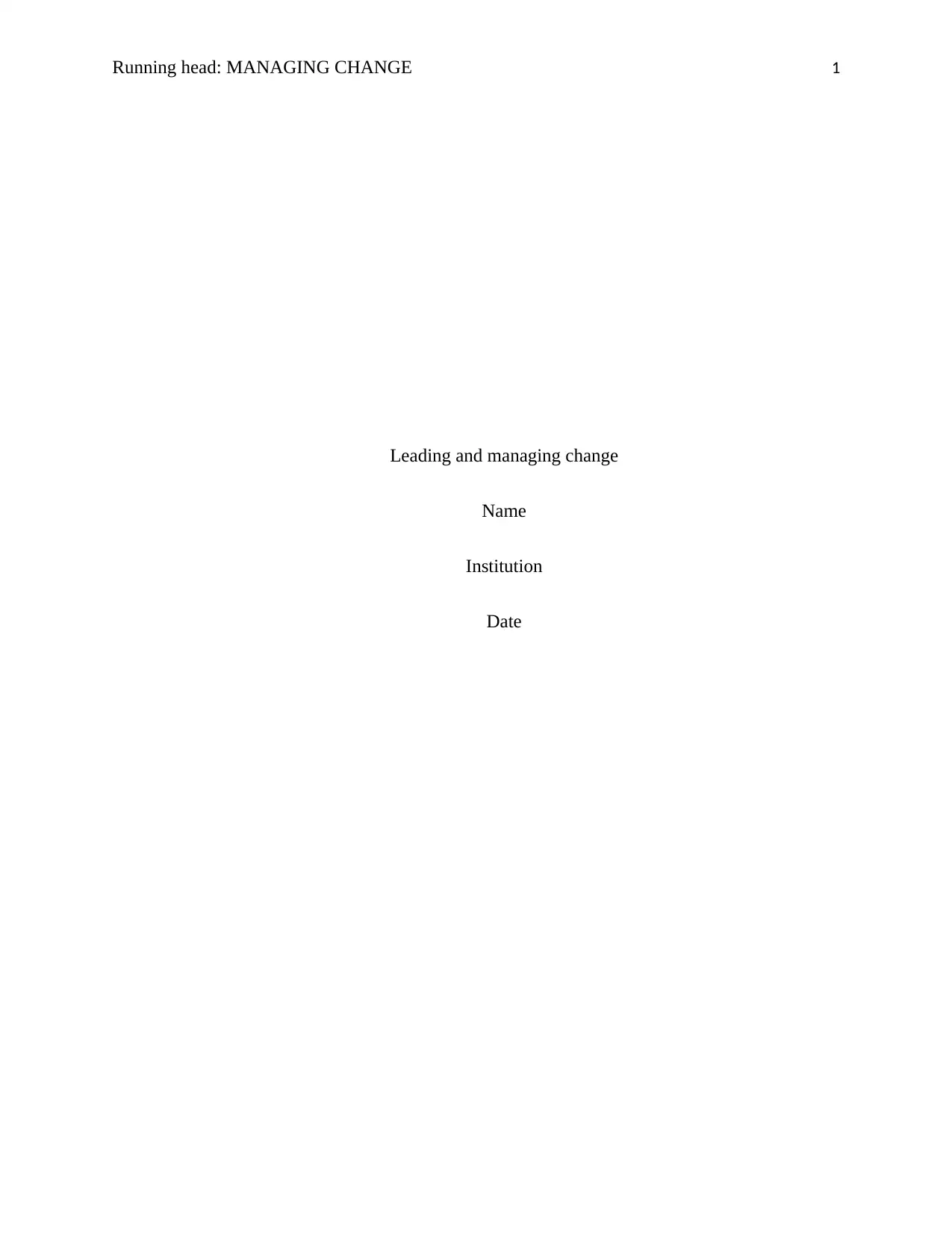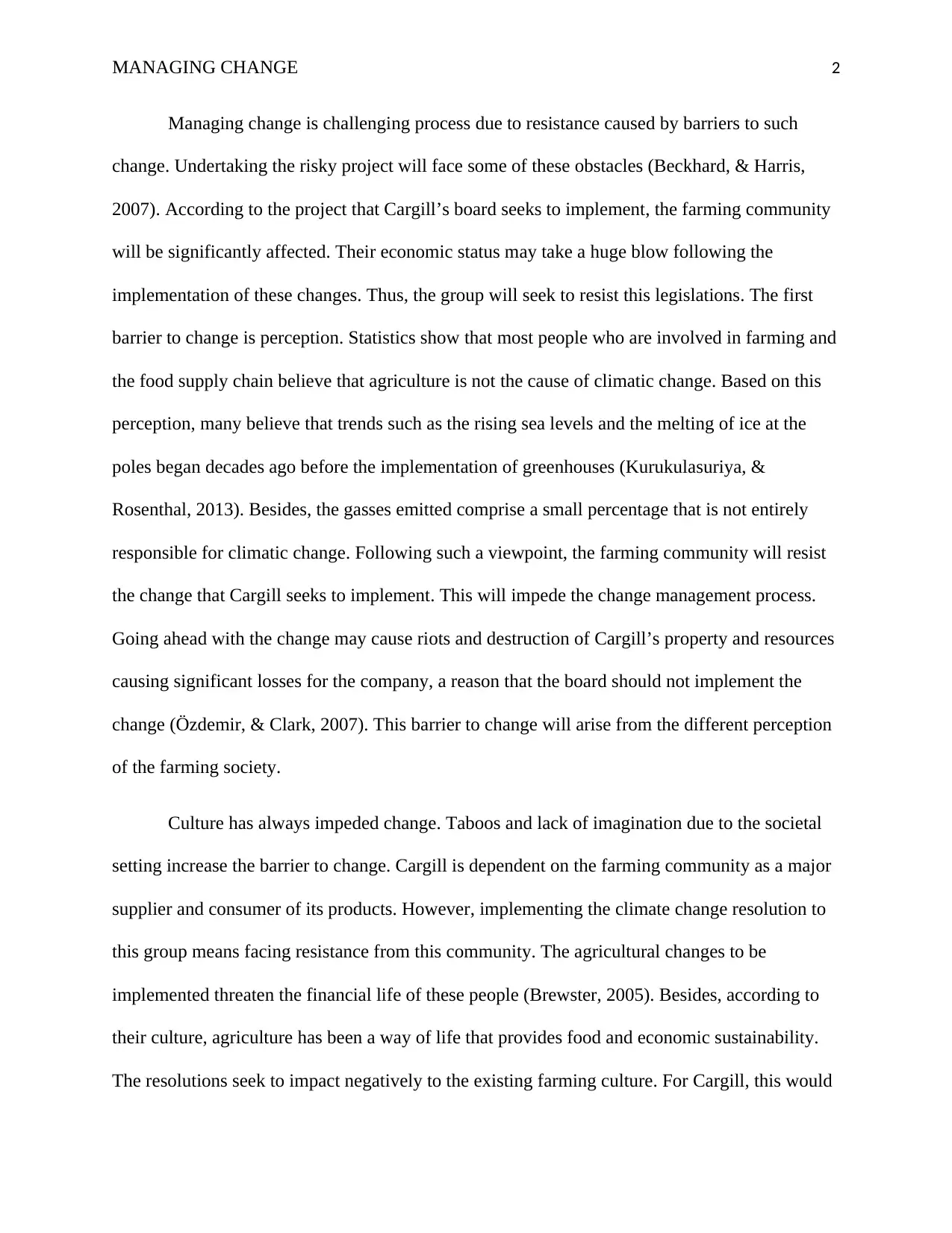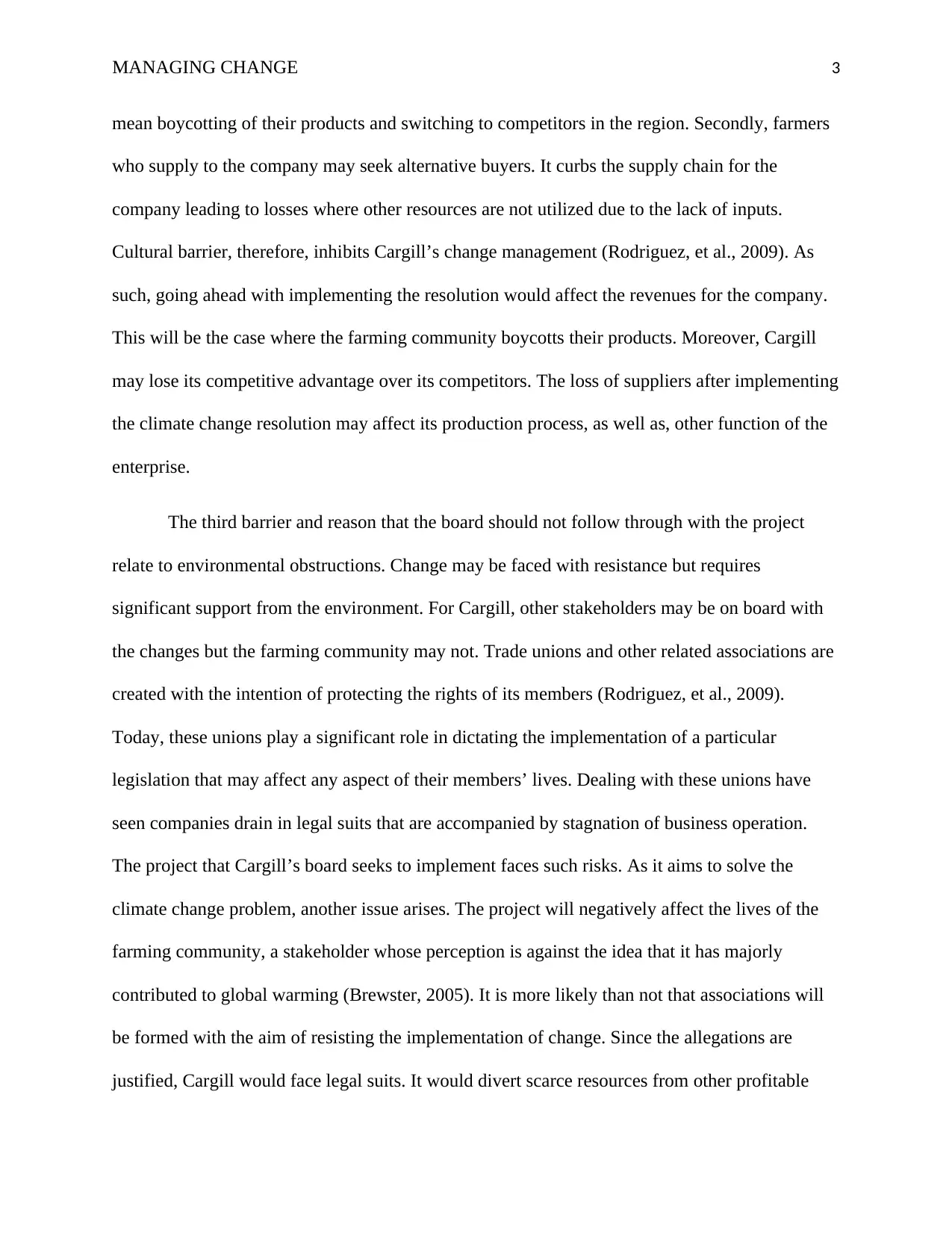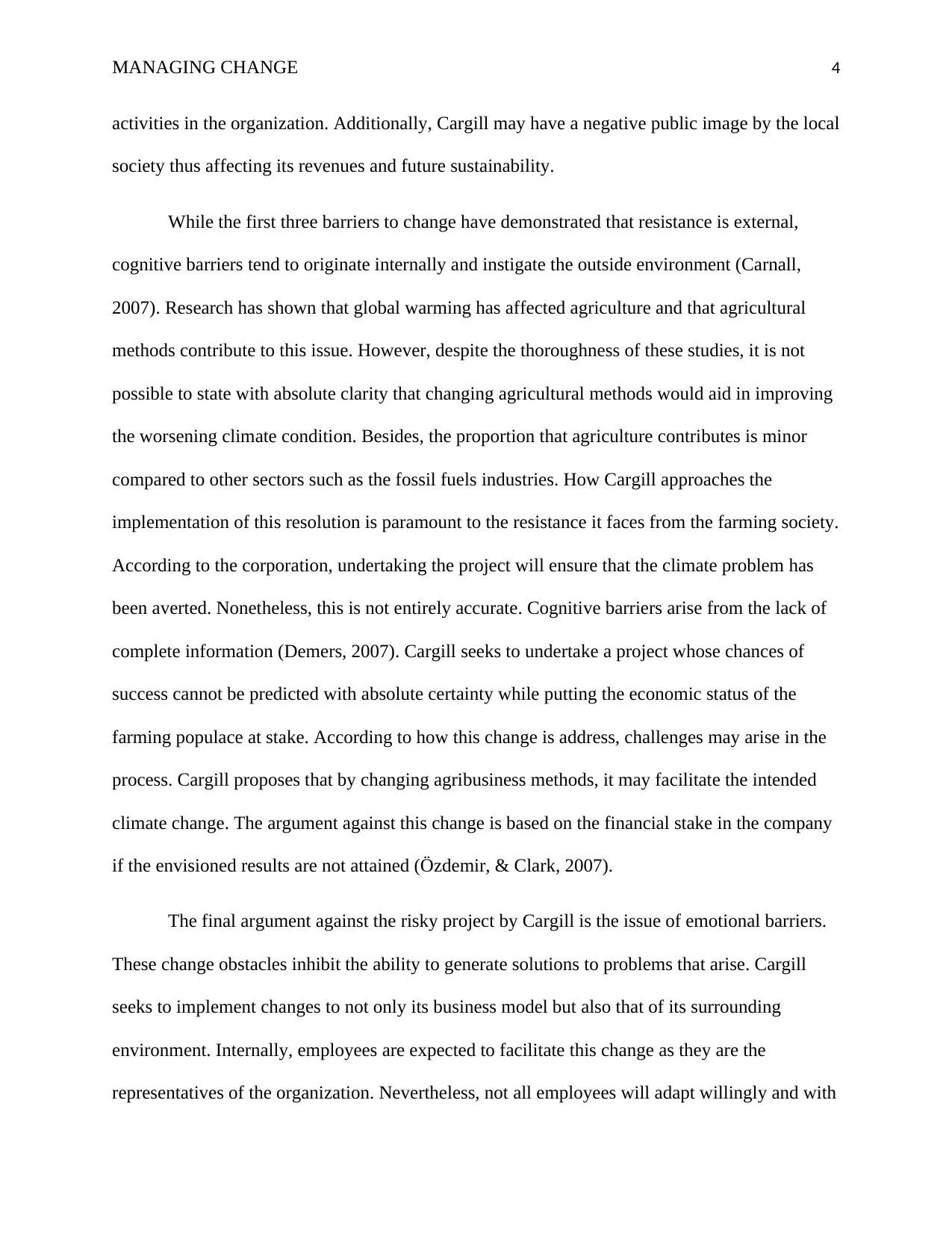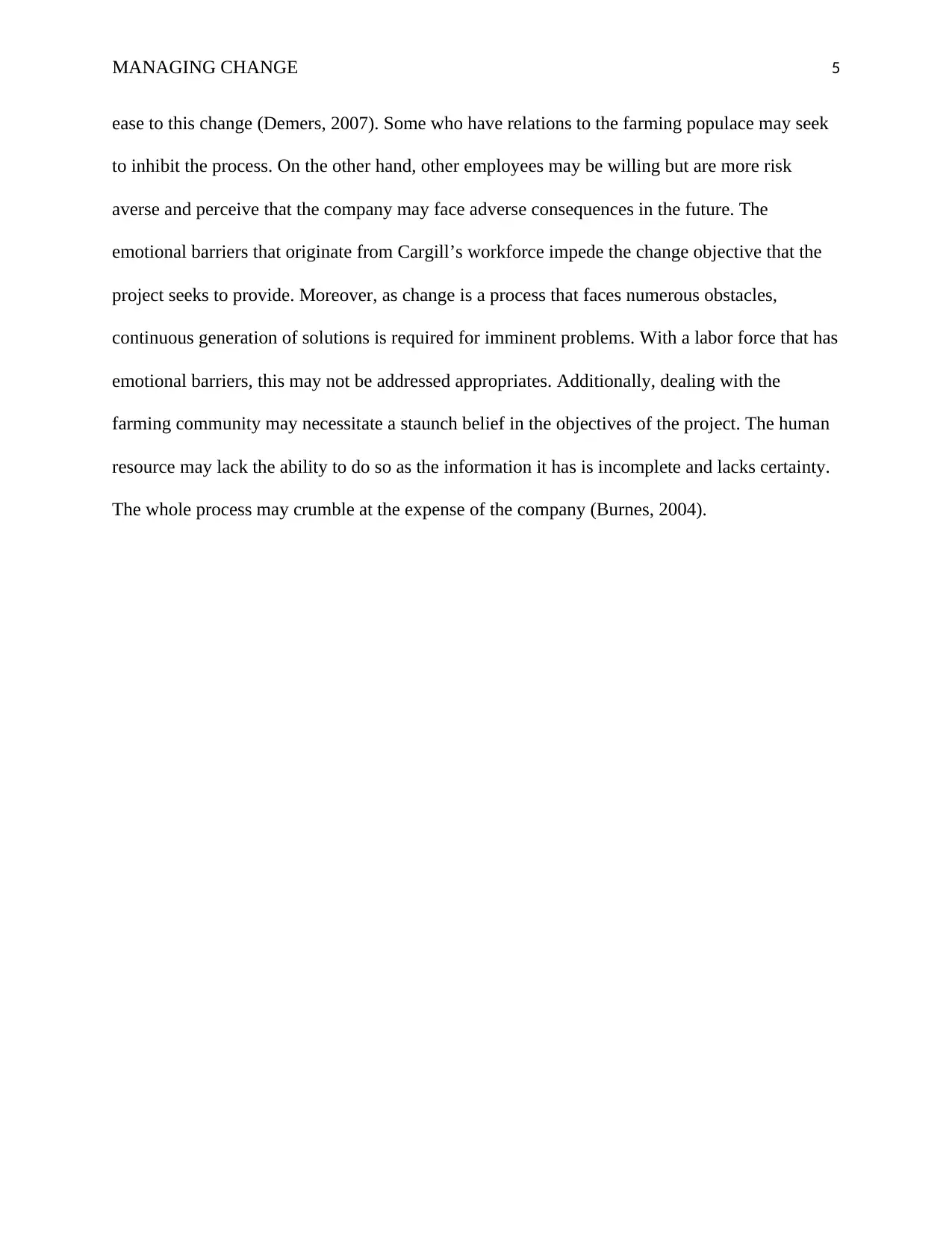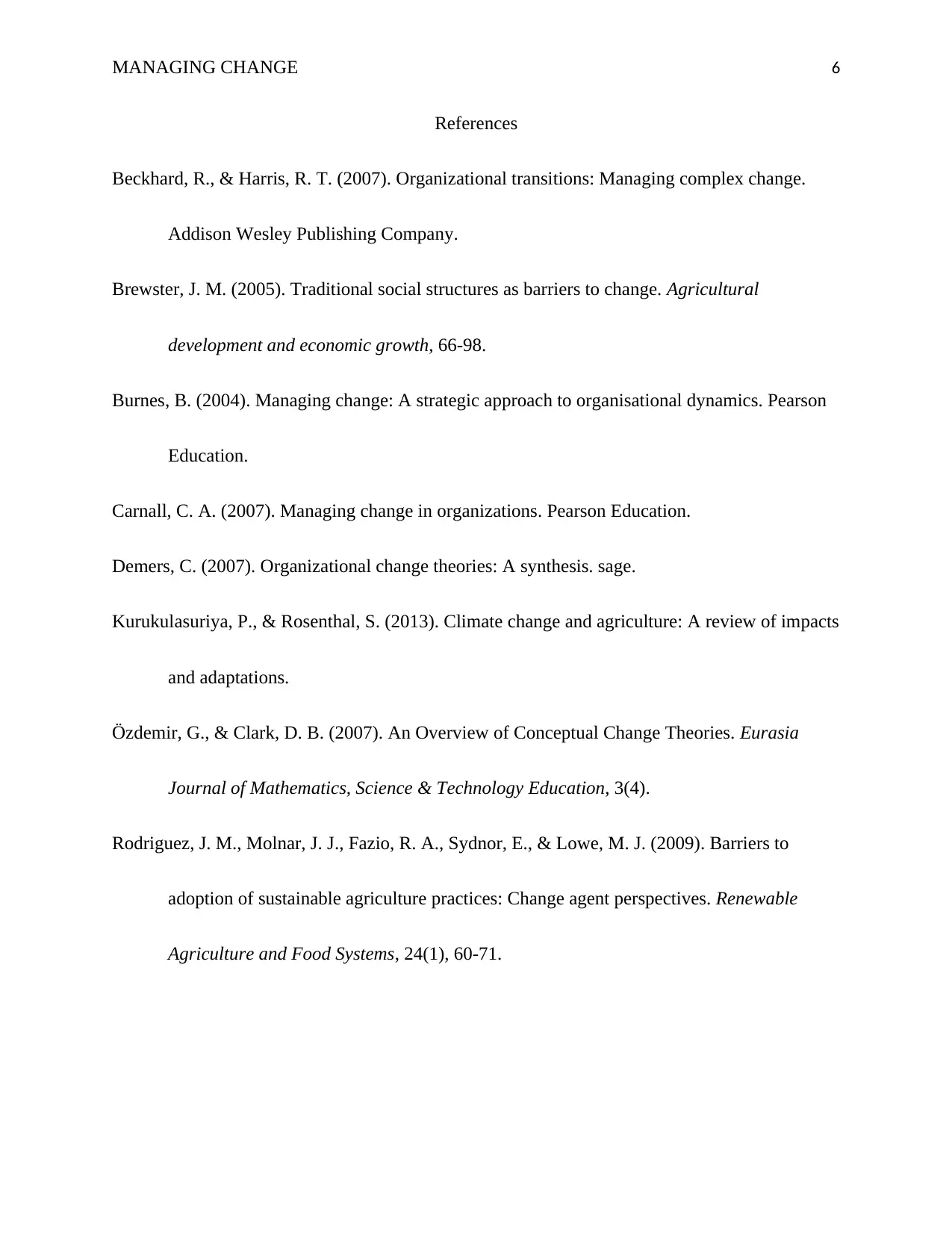The article discusses the challenges of managing change in organizations, specifically in the context of Cargill's board seeking to implement changes to address climate change. The author identifies four barriers to change: perception, culture, environmental, and cognitive barriers. Perception barriers arise from differing views on the causes of climate change, while cultural barriers stem from taboos and lack of imagination within the farming community. Environmental barriers relate to external pressures from trade unions and associations, and cognitive barriers originate from incomplete information and uncertainty. The article also touches on emotional barriers, which can impede the ability to generate solutions to problems that arise during the change process.
![[object Object]](/_next/static/media/star-bottom.7253800d.svg)
![[object Object]](/_next/static/media/star-bottom.7253800d.svg)
